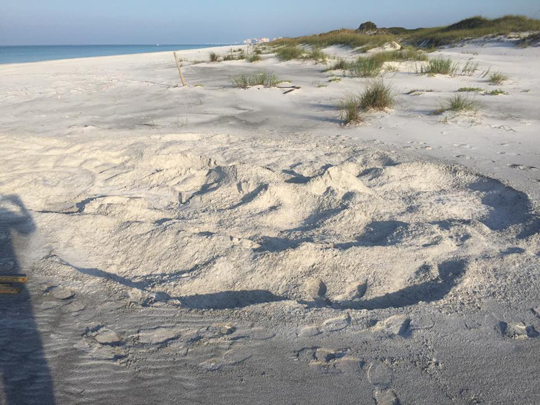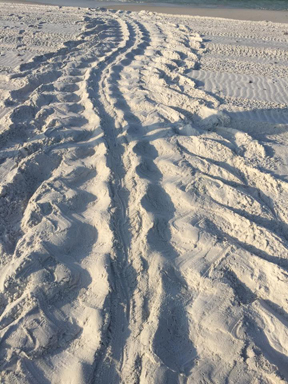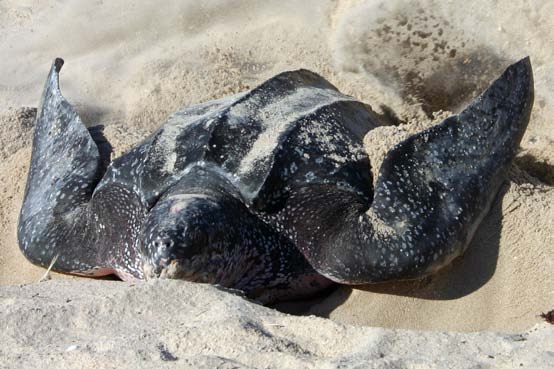
This past Sunday, South Walton received a very special visitor. Along the beach of Topsail Hill Preserve State Park, a leatherback sea turtle came ashore to nest. Leatherbacks are the largest of all sea turtles in Florida, and are endangered.
The track from the beach to the nest was 7 feet across. The nest’s body pit was 18 feet across, Assistant Park Manager, George Royal informed us.

Nesting leatherbacks are a rarity in the Florida Panhandle, with less than a half a dozen nests documented over the last five years according to a Florida Fish and Wildlife Conservation Commission survey. Only one was laid in Walton county over that period of time. Nesting leatherbacks are more prevalent along the east coast. Click here to learn more: Leatherback nesting data.
There are four species of turtles that nest in the Florida Panhandle. The most common is loggerhead, along with green turtle, an occasional Kemp’s Ridley, and most uncommon, leatherback. Another Florida species, hawksbill, can be found in South Florida.
About the leatherback sea turtle (Dermochelys coriacea)
The leatherback is a fascinating and unique animal, even among sea turtles. It is larger, dives deeper, travels farther, and tolerates colder waters than any other sea turtle. Most leatherbacks average 6 feet in length and weigh from 500 to 1,500 pounds, but the largest leatherback on record was nearly 10 feet long and weighed more than 2,000 pounds.

Leatherbacks look distinctively different from other sea turtles. Instead of a shell covered with scales or shields, leatherbacks are covered with a firm, leathery skin and have seven ridges running lengthwise down their backs. They are usually black with white, pink, and blue splotches and have no claws on their flippers. Leatherbacks eat soft-bodied animals such as jellyfish, and their throat cavity and scissor-like jaws are lined with stiff spines that aid in swallowing this soft and slippery prey. Young leatherbacks in captivity can consume twice their weight in jellyfish daily.
True denizens of the deep, leatherbacks are capable of descending more than 3,000 feet and of traveling more than 3,000 miles from their nesting beach. They are found throughout the Atlantic, Pacific, and Indian oceans, as far north as Alaska and Labrador. Researchers have found that leatherbacks are able to regulate their body temperature so that they can survive in cold waters. The leatherback is found in Florida’s coastal waters, and a small number (from 30 to 60 a year) nest in the state.
